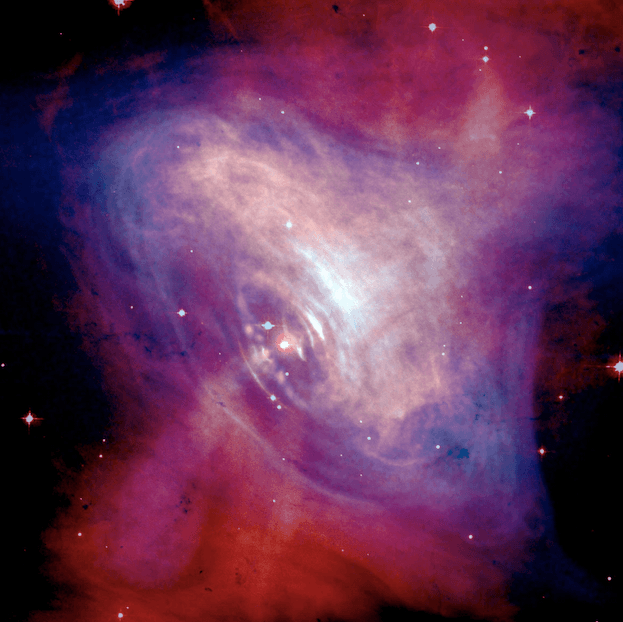What would a planet orbiting a pulsar look like from the ground? Would it look like a giant disco planet with a constant strobe light?
Pulsar form from supernova explosions, and they are neutron stars that spin on their axis thousand time per second. They are highly magnetised and the precession of the magnetic field generates the pulse of electromagnetic radiation that makes them unique (More on Pulsars in this post).
Now, having planets surviving the supernova explosion is rare, but not impossible, 20 years ago we found a millisecond pulsar (code name: PSR B1257+12) with planets orbiting it with not a care in the Universe. It emits short radio pulses every 6.2 milliseconds. Even if we were able to see radio waves this would be too fast for us. Vision wise, the shortest interval that we can perceive is about 80 milliseconds, so it needs to be a slowish pulsar for us to be able to see it.
But what is actually happening around a Pulsar? The emission we see comes from the poles of the star. Around the pulsar the situation is different. The strong magnetic fields will generate synchrotron radiation (most likely in the form of hard x-rays and gamma ray) which will boil clean the atmosphere of every planet orbiting the pulsar and bring the interstellar medium (ISM) to a cozy 8000K (3000 degree warmer than the surface of the Sun).
Now, is there a material that would happily absorb X-rays and re-emit a cosy visible light. Lucky there are. Some crystals, glasses and ceramics do exactly that, so it theoretically possible to have a strobo effect around a pulsar, although the ISM temperature may not keep the surface of the planet solid.
So the recipe for the ultimate discotheque in the universe is find yourself a slowish old pulsar, whose interstellar medium had time to radiate away and cool down, put around it a crystal planet and enjoy 100 million years of underground parties as the pulsar loses angular momentum.

